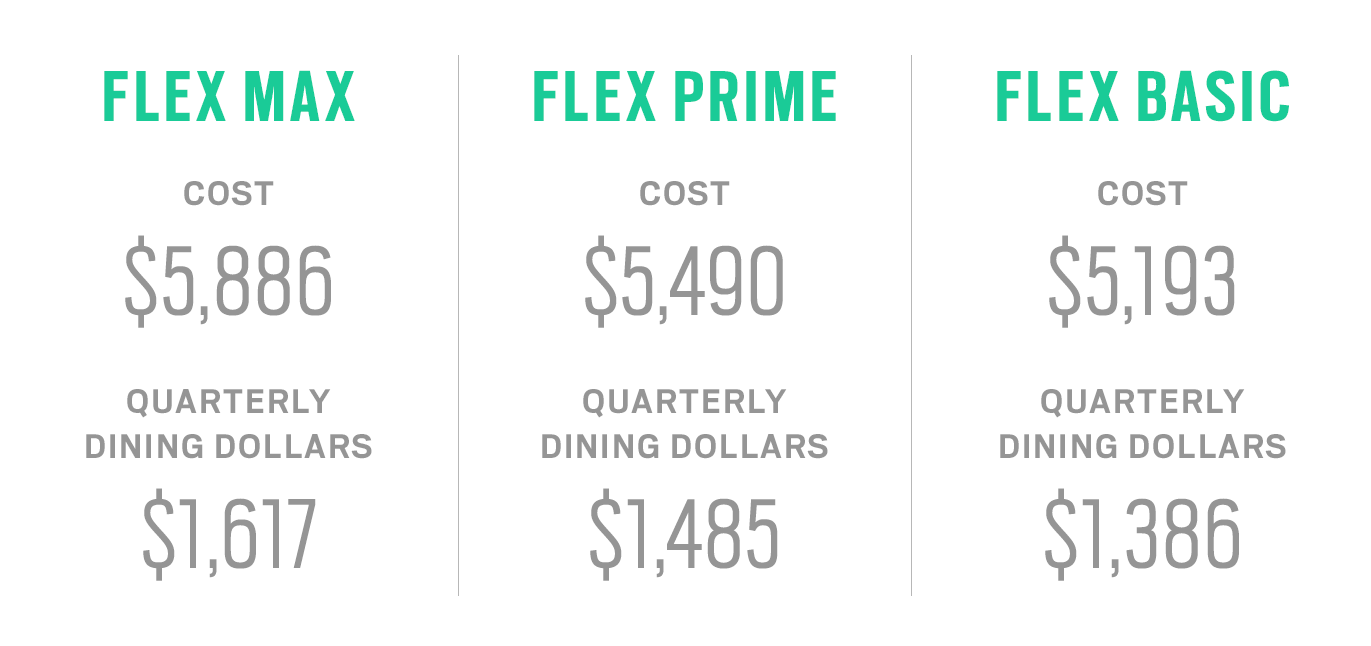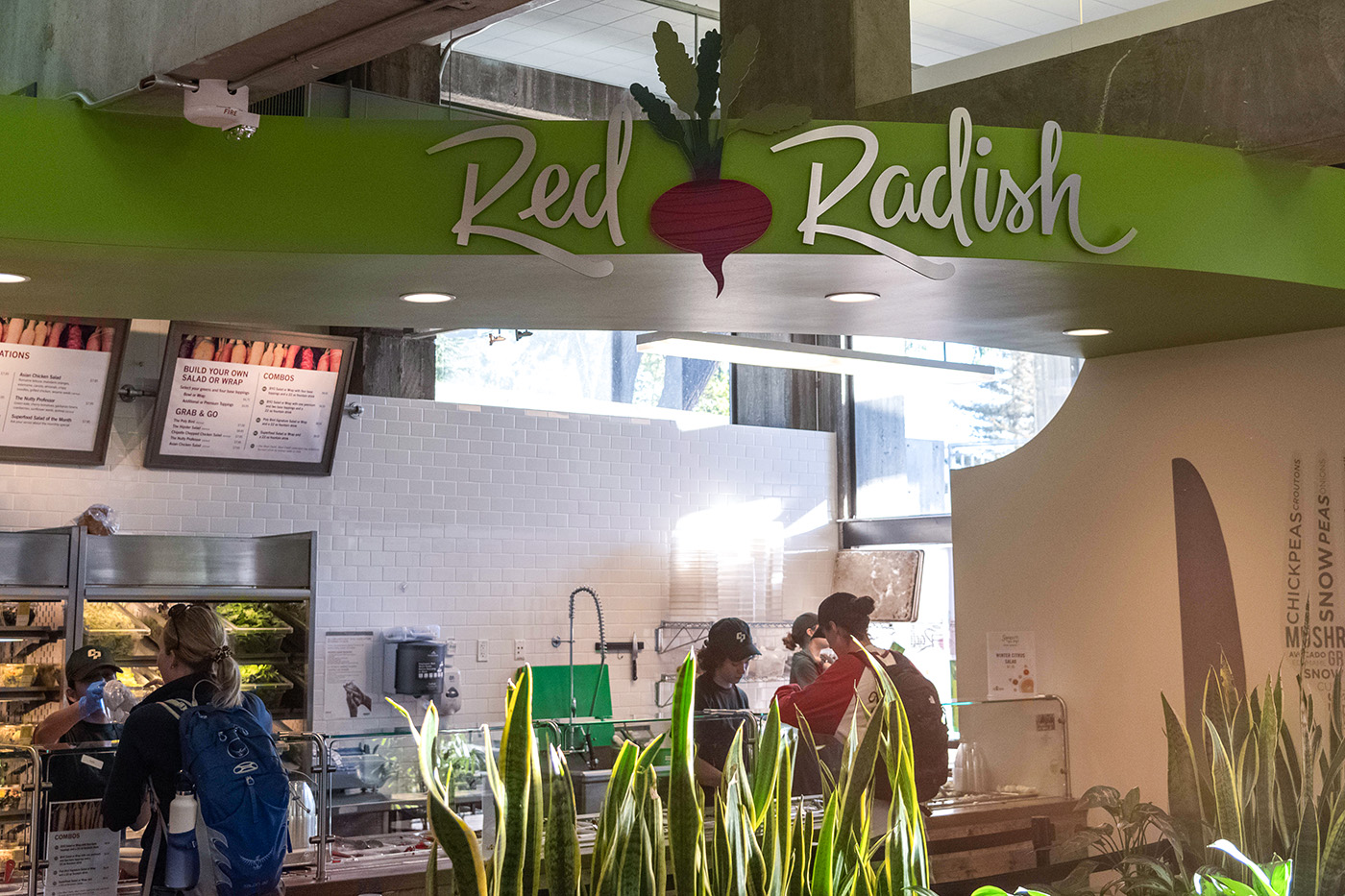Campus Dining released new dining plans for incoming freshmen and continuing and transfer students for the 2019-20 academic year. Dining Dollars, similar to Plus Dollars used during the previous two academic years, will replace the current meal credit and declining balance system.
According to Cal Poly Corporation Communications Specialist Aaron Lambert, the decision to implement change was a result of feedback from students regarding the current meal credit system.
“Three years prior, there was one plan and students wanted more options, so Campus Dining created three completely new options and expanded the offerings to continuing and transfer students” Lambert said. “Changes are a big deal and only occur based on input and feedback from students.”
New options
Similar to the current dining plan system in place, incoming freshmen will get to choose between three dining plans: First-Year Flex Max, First-Year Flex Prime and First-Year Flex Basic.
 The First-Year Flex Max offers students enough Dining Dollars to pay for 18 meals per week. This plan costs $5,886 for the entire school year, translating to about $1,617 per quarter.
The First-Year Flex Max offers students enough Dining Dollars to pay for 18 meals per week. This plan costs $5,886 for the entire school year, translating to about $1,617 per quarter.
The First-Year Flex Prime costs a total of $5,490 for the entire year, with enough Dining Dollars for 16.5 meals and snacks per week.
The third and cheapest option for incoming freshmen is the First-Year Flex Basic, which costs $5,193 per academic year and offers Dining Dollars for 11 meals per week.
Continuing and transfer students will have the choice between the Mustang Flex Max, Mustang Flex Prime and Mustang Flex Basic, according to Cal Poly Campus Dining. Each plan is about 40 percent cheaper than the freshman variation.
“It’s just Plus Dollars on a Poly Card, like a debit card,” Lambert said.
“It’s just Plus Dollars on a Poly Card, like a debit card”
All plans include a base cost of up to $825 to provide a discount at 805 Kitchen and Vista Grande, scheduled to open prior to Fall 2019.
Dining Dollars can be used at all Campus Dining locations, and some can roll over to the following quarter. At the end of Spring Quarter, however, all remaining Dining Dollars are forfeited unless the student purchases a new plan for the 2020-21 academic year, according to the Cal Poly Campus Dining website.
Lambert said the executive chefs and their teams are constantly receiving feedback from students and customers and are whipping up new recipes for Campus Dining venues like 805 Kitchen to “break up what some can see as monotony and others love as consistency.”
“Whether it is through the text and tell program, focus groups or people simply mentioning it to them in 805 Kitchen, [the Campus Dining chefs] take that information to heart and are happy to offer something different,” Lambert said.
Student response
Landscape architecture senior Luke Gamboa had meal credits his freshman year, but called it a “very complicated system.”
Freshmen during the 2014-15 academic year were given specific times for meals, each of which had a set cost, with breakfast priced at $8, lunch at $9, dinner at $10.75 and late night at $9. If the meal exceeded the predetermined price, the remaining cost was taken out of freshmen’s Plus Dollars, according to Lambert.
Though he will be graduating in Spring 2019, Gamboa said he is happy Campus Dining is switching to Dining Dollars for the next academic year because it will give freshmen more freedom to use their money as they like.
“If freshmen don’t want a drink or chips with their meal credit, it’s kind of a waste of a meal,” Gamboa said. “Dining Dollars don’t seem as restricting and are a much better system.”
“Dining Dollars don’t seem as restricting and are a much better system”
Civil engineering senior Marcial Lamera also had meal credits his freshman year, but he said he did not like them as they were difficult to keep track of throughout each quarter.
“Meal credits are less intuitive because in the real world, you won’t be budgeting meal credits. You’ll be using cash, which is more similar to [Dining Dollars],” Lamera said.

Anthropology and geography senior Marielle Concejo said she enjoyed having Plus Dollars when she was a freshman and felt disappointed when Campus Dining made the switch to meal credits for the 2018-19 academic year.
Concejo said that when she had Plus Dollars her freshman year she would end up finding ways to spend excess Plus Dollars by purchasing food for random students at the library or for homeless people she would encounter off campus when shopping downtown.
“There were students who would cry over me buying them one croissant from Julian’s,” Concejo said. “You never know what people are going through.”
“There were students who would cry over me buying them one croissant from Julian’s”
Business administration freshman Karenna Case said she began the year with the Mustang 150 Plan, the cheapest dining option for the 2018-19 academic year, but she switched to the Mustang All Flex Plan at the start of Winter 2019.
“The meal credits were just not a good meal plan,” Case said. “When I had the Mustang 150, I had to buy a lot of people lunch because I had so many meal credits left over last quarter.”
With the Mustang All Flex Plan, Case said she feels she has much more flexibility than when she had meal credits, even though she had to convince her parents that the higher cost of the All Flex Plan would be worth it.
Next academic year, all on-campus freshmen will be required to purchase one of the three dining plans, while the plans are optional for continuing and transfer students. Cal Poly offers students more than 27 on-campus dining venues composed of three food trucks, three markets and more than 1,000 menu options, according to the Cal Poly Campus Dining website.

